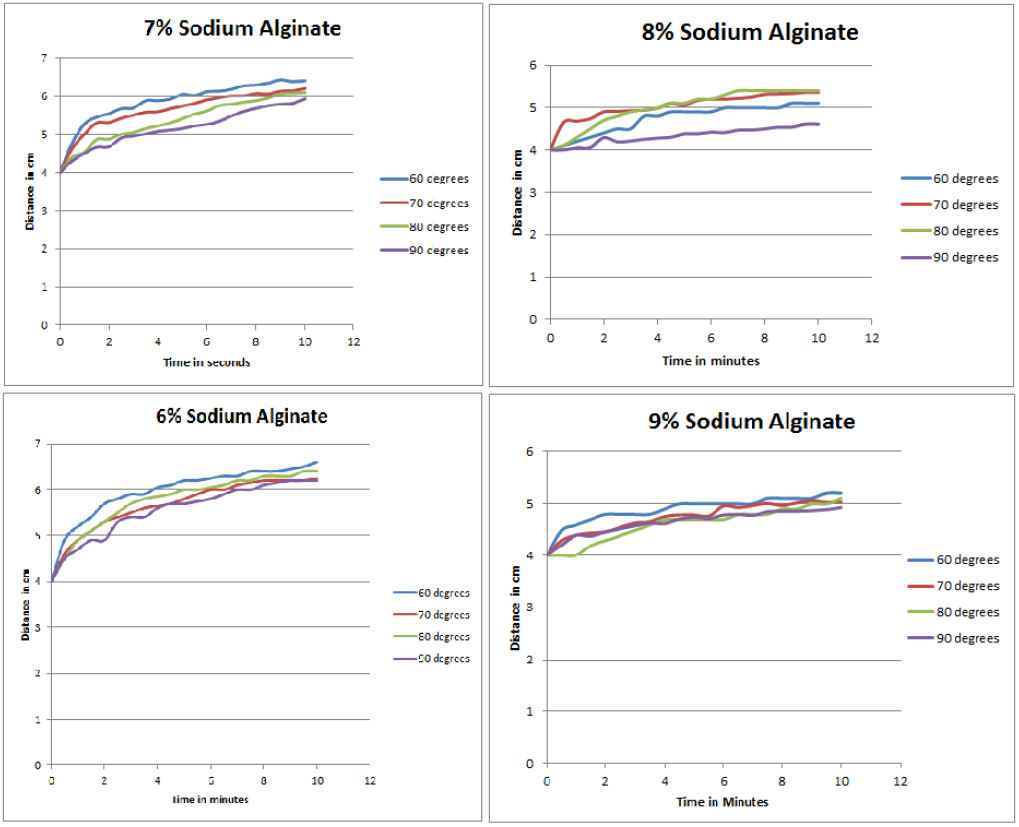Tyler Hendricks and Dr. Alonzo Cook, Chemical Engineering
Introduction
Mostly an exploratory project, the goal of this study was to determine the best combination of preparation temperature and concentration of alginate gel to be used with 3D printing technologies in tissue engineering and future regenerative medicine techniques. Recognizing the role that 3D printing technologies could have, many researches have attempted to develop new bioprinting methods to be implemented in regenerative medicine techniques. Many methods revolve around the idea of printing scaffolds upon which cells could grow. However, many challenges have arisen such as the difficulty to successfully mimic the complexity of vascular structures in such scaffolds while also ensuring the vitality of the cells throughout the printing process. It is proposed that many of these challenges could be overcome by developing a gel that contained such characteristics as being biodegradable, cell viable, cross-linkable and 3D printable. By developing such a gel, one could print a scaffold of complex vascular structure that both maintained the desired shape while allowing cells to attach and proliferate. Sodium alginate hydrogels demonstrate many of these characteristics. However, in order to be successfully used in 3D printing techniques, a gel must have a consistency that allows for it to be printed without relaxing too quickly so that it can be cross-linked to maintain the desired shape. The consistency of the alginate hydrogel can be affected by both the concentration of alginate gel and the temperatures used during preparation. It is hypothesized that as preparation temperature and alginate concentration increases that the resulting alginate gel will solidify faster and retain its shape longer after printing.
Methodology
Various tests were performed in order to observe the effects of preparation temperature and alginate concentration on the resulting sodium alginate hydrogel. For all tests, the alginate hydrogel was prepared by heating water in a glass beaker on a hot plate and adding the sodium alginate to the water once it had reached the desired temperature. This mixture was stirred vigorously until homogenous. The resulting gel was then allowed to cool to room temperature before being tested. This decision was made in order to best mimic the state of the hydrogels that are to be used in 3D printing techniques.
The first round of tests used the following method. Sodium alginate hydrogels with an alginate of concentration of 4% were prepared at 60, 70, 80 and 90 degrees Celsius as described previously. Then, a half sphere of each sample was dropped on a glass plate and allowed to relax. As the alginate hydrogel spread across the plate, it was recorded in seconds how long it took for the half sphere sample to pass intervals of .5 cm. This was repeated for samples prepared at 6%, 8%, 10% and 12% concentration. The results of these tests were somewhat inconclusive and it was determined that the method of measuring the rate of relaxation needed to be revised. As such, a second round of tests was performed.
The second round of tests included samples of sodium alginate hydrogels prepared with 6%, 7%, 8%, and 9% concentrations. Each concentration was prepared at 60, 70, 80 and 90 degrees Celsius using the method described previously. Again, a half sphere of each sample was dropped on a glass plate and allowed to relax. In these tests, the distance each half sphere had spread was recorded every 30 seconds.
Results:
While the first round of tests provided results that were mostly inconclusive, it was determined that alginate hydrogels prepared at concentrations greater than 10% were too thick for use with the 3D printer. As such, the second round of tests was performed using hydrogels made from concentrations of 6, 7, 8 and 9 percent. The results of these tests are shown in the graphs included at the end of this report.
Discussion and Conclusion
As hypothesized, as the concentration of sodium alginate used to prepare the alginate hydrogels increases, the consistency thickens and the rate of relaxation decreases. However, there does not seem to be clear trend when it comes to preparation temperature. It was observed that the sodium alginate mixed more easily in hydrogels prepared at higher temperatures but that this did not have a significant effect on the final distance that the alginate hydrogel spread when allowed to relax. Furthermore, it was determined that sodium alginate hydrogels prepared with an alginate concentration of 7% and 8% were compatible with the printer in that they both retained their shape long enough to be cross-linked without being too thick to be printed. Concentrations of less than 7% were very runny and did not retain their shape very well while concentrations of 9% and greater were too thick for use with the printer. More tests are planned involving the 3D printer and will be carried out subsequently. However, through these tests it was determined that sodium alginate hydrogels prepared with an alginate concentration of 7 to 8 percent are adequate for use in 3D printing techniques.

